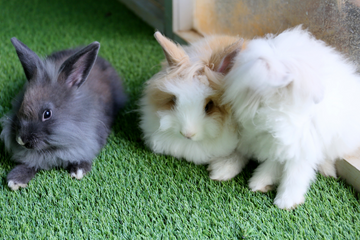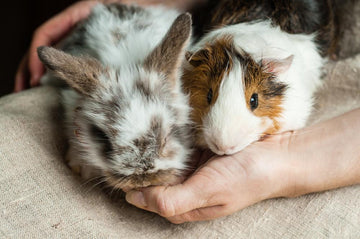DIY Indoor Rabbit Cage Ideas
Creating a cozy and functional space for your rabbit is an enjoyable part of being a rabbit owner. Whether you’re short on space or want to build something unique, a DIY indoor rabbit cage can be the perfect solution. With a little creativity, you can design a cage that fits your rabbit’s needs while matching your home’s aesthetic.
Click Here For a Guide to Creating the Ideal Litter Box.

Building your cage also gives you control over the materials, layout, and features to ensure it’s both safe and comfortable for your bunny. Let’s explore some DIY ideas to inspire your project.
Why Choose a DIY Indoor Rabbit Cage?
Rabbits thrive in environments tailored to their physical and emotional needs. Commercial cages often lack space and personalization, while a DIY option allows you to create a haven designed just for your rabbit. Not to mention, it’s often more budget-friendly.
A good DIY indoor rabbit cage should include plenty of space for movement, a cozy spot for resting, and areas for feeding and litter training. Using safe and durable materials ensures your bunny’s safety, while a well-thought-out design makes cleaning and maintenance a breeze.

Essential Features of a DIY Indoor Rabbit Cage
Before diving into designs, consider these essentials for your rabbit’s cage:
-
Space: Rabbits need room to hop, stretch, and play. A minimum of four times their body size is a good rule of thumb, but bigger is always better. Giving them enough space reduces stress and promotes exercise, which is vital for their health.
-
Flooring: Avoid wire floors, which can hurt your rabbit’s feet. Opt for solid, non-slip surfaces covered with soft bedding or rugs. Providing traction is important to prevent injuries and discomfort.
-
Ventilation: Make sure there is proper airflow to keep your bunny comfortable. Mesh sides are an excellent choice for maintaining air circulation without compromising security.
-
Accessibility: Easy access for cleaning and interacting with your rabbit is a must. Look for designs that include doors, removable trays, or modular parts to simplify maintenance.

DIY Indoor Rabbit Cage Ideas
1. C&C Grid Cages
Cubes and Coroplast (C&C) cages are a popular choice for DIY enthusiasts. Made from modular grids and corrugated plastic sheets, these cages are highly customizable. You can create multiple levels, ramps, and hideouts to give your rabbit a fun and engaging space. Additionally, grids are easy to rearrange as your needs change.
For durability, ensure the grids are tightly connected, and use zip ties for extra security. Add a base of Coroplast or PVC to keep the cage easy to clean and waterproof. These lightweight materials make the cage portable and practical for any home.
Learn more about C&C cages here.
2. Wooden Frame Cages
For a sturdy and aesthetically pleasing option, build a cage using a wooden frame. Use untreated wood to ensure safety, and cover the frame with mesh or wire panels. You can include doors for access and add levels using wooden platforms. Paint or stain the wood with pet-safe products to match your home’s decor.
This cage type can include custom features like storage for supplies or built-in hideaways. The wooden frame also allows you to experiment with intricate designs that seamlessly fit your home’s interior.
3. Repurposed Furniture
Turn an old bookshelf, cabinet, or entertainment center into a rabbit cage. Remove doors or shelves to create open spaces, and line the interior with non-toxic materials. This option is perfect for saving space and blending the cage seamlessly with your home’s furniture.
Don't forget to sand down rough edges and add ventilation holes for airflow. This creative reuse of furniture not only minimizes waste but also allows you to create a one-of-a-kind rabbit habitat.
4. Playpen-Style Enclosures
Portable playpens are an affordable and flexible option. Arrange the panels to create a designated area for your rabbit. Add a soft floor covering, a litter box, and a few toys to make it a cozy and functional space. Playpen-style enclosures are easy to move and reconfigure, making them great for renters or those with changing needs.
Check out additional rabbit care tips.
5. PVC Pipe Frame Cages
PVC pipes are lightweight, inexpensive, and versatile. Use connectors to assemble a frame, then cover it with mesh or fabric panels. This design is ideal for creating larger enclosures without spending a fortune. Be sure to sand any rough edges and secure the mesh to prevent escapes.
This design can be expanded with additional pipes and connectors, making it a practical choice as your rabbit grows or if you decide to adopt another bunny.
Tips for Success
When building a DIY indoor rabbit cage, keep these tips in mind:
-
Use non-toxic materials and paints to ensure your rabbit’s safety.
-
Include a hideaway where your rabbit can feel safe and secure.
-
Make cleaning easy by incorporating removable trays or doors.
-
Place the cage in a quiet area with natural light but away from direct sunlight or drafts.

Maintenance and Care
A clean and well-maintained cage keeps your rabbit happy and healthy. Spot-clean daily to remove waste and replace soiled bedding. Weekly, do a deeper cleaning of all surfaces and accessories using pet-safe cleaning products.
For more tips on maintaining your rabbit’s living space, check out our guide to cleaning rabbit litter boxes.
Get Creative with Your DIY Rabbit Cage
Building a DIY indoor rabbit cage is an excellent way to create a home that’s as unique as your rabbit. Whether you’re repurposing furniture or assembling a custom playpen, your bunny will appreciate the effort you’ve put into their comfort and happiness.
Ready to start your project? Share your DIY success stories with us and inspire other rabbit owners to think outside the box!
Key Takeaways:
-
DIY indoor rabbit cages allow for customization, creativity, and cost-saving.
-
Focus on safety, accessibility, and comfort when designing your cage.
-
Explore materials like C&C grids, wood, and repurposed furniture for versatile options.
-
Maintenance is key to ensuring your rabbit stays healthy and happy.

Fun and Unique Names for Rabbits

Healthy Rabbit Treats for Hoppy Pets






![RHDV2 Critical Information + Frequently Asked Questions [Updated 03/20/2025]](http://www.rabbitholehay.com/cdn/shop/articles/rhdv2-critical-information-frequently-asked-questions-V1.png?v=1742490107&width=360)

